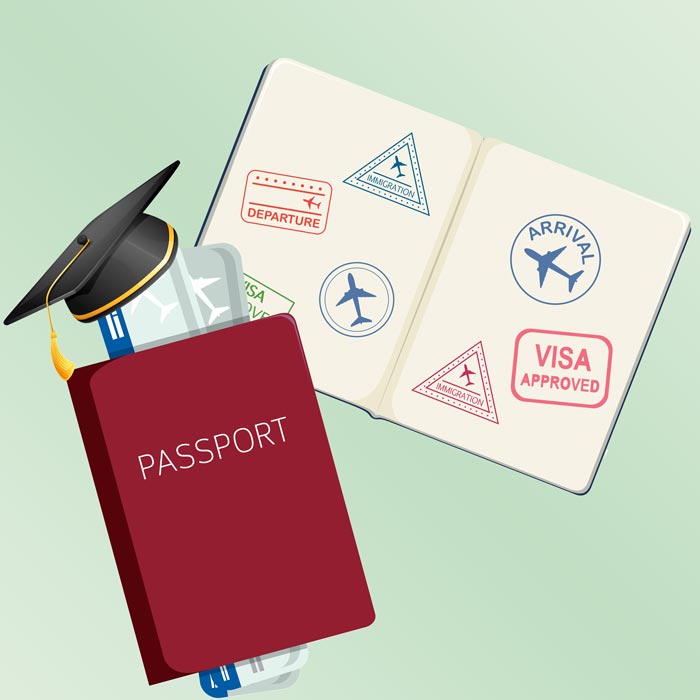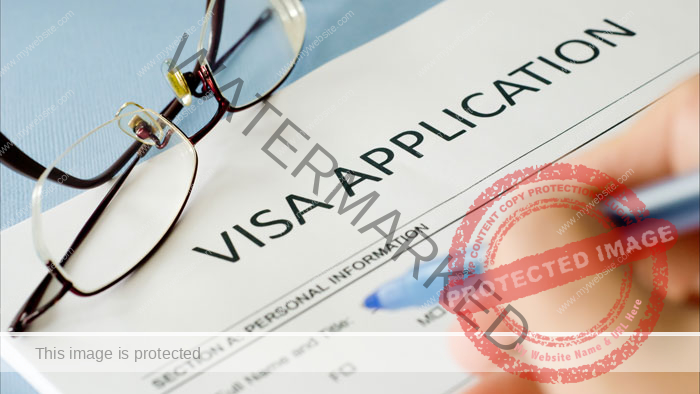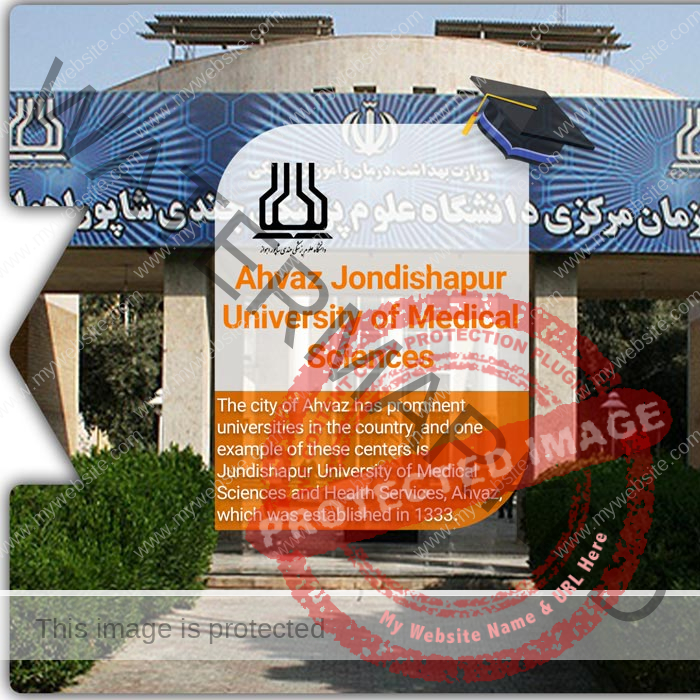![]()
If you would like to get information about questions such as what are visas and passports, the difference between visas and passports, types of visas, types of passports, stay with us. Currently, the latest statistics and information show that the planet has 195 different countries spread over the seven continents of Africa, Asia, Australia, Europe, North America, South America and Antarctica (Antarctica).
Each of the 195 countries in the world has a clear and determined border on land, water and air, and they follow their own travel and immigration laws. In fact, all of us humans are inhabitants of this planet, but we cannot change our place of residence and birth from one country to another without coordination, having documents and obtaining various permits, and without any previous documents and coordination, even for a period of time. In short, let’s travel to another country in the world.
So, stay with us so that in this article, we will talk to you completely about what a visa is, how to get a visa, the difference between a visa and a passport, types of visas and many other useful and important details.
What is a visa?
Surely, many of you are familiar with the basic concept of visa and know what a visa is, but for those people who may not be familiar with the meaning or functionality of a visa, we must say that a visa is your permission to enter a foreign country. Is.
In answer to this question, it can be said briefly that a visa is a conditional permission to enter a foreign country and stay there for a limited and specified period. The government of each country may require or exempt the citizens of other countries from receiving visas according to the political and cultural conditions as well as its relations with other countries.
Visa can be issued for short term (one day, several days and several months) or long term and allow you to stay in only one country or several countries at the same time. The visa may be attached as a sticker on the page of your passport or it may be completely electronic and online.
What is the difference between visa and passport?
A visa is a conditional permission to enter a country, which is issued by a country and to people who have the conditions to enter that country. But a passport is a document (such as a birth certificate) that is used to identify the citizens of a country outside the borders of their own country. In fact, every citizen has a passport and can apply for an unlimited number of visas from different countries.
However, regarding the difference between a visa and a passport, there is no limit on the visa label and you can apply for all types of visas, including German tourist visas or work in Australia, until the passport is valid. Another important point regarding the difference between a visa and a passport is the concept of validity and power. The meaning of validity and power for visa and passport has different aspects and many people are unaware of it.
That is, if you have an American passport, regardless of the validity of this document for 5 or 10 years, the power of this country’s passport is so high that you can travel to 184 countries in the world without receiving a visa or with an airport visa.
But in the visa category, the validity of the visa depends on the time period and the allowed amount of presence, and of course the possibility of traveling to several countries with a single visa. Like the Schengen visa with permission to visit 26 countries, which shows a different definition of power and credibility.

Types of visas
After the general explanation of the common visa question, it is time to introduce the types of visas. This case can be categorized in different aspects. The main and important aspect of the visa is the time period, which is divided into the following two categories:
- Short term visa
- Long term visa
At the very beginning of what is a visa, we must tell you that the details of this important and international document are many and beyond your imagination, and each country in the world has its own rules and types. But still, we will try to comprehensively explain the types of these licenses to you.
Many people, when they come across the term short-term visa, immediately think of the tourist visa, but you should know that this type of entry permit is not only limited to the tourist visa, but the types of short-term visas include the following :
- Transit: a very short-term permit (up to 24 hours) to be at the air, land or sea border of a country and go to a country outside the territory of the country providing the transit visa.
- Tourist: It is issued with the purpose of sightseeing and short-term presence in the destination country and can be used for other purposes such as visiting friends and relatives, participating in business events and conferences, or participating in a short training course.
Meanwhile, the types of long-term visas are as follows:
- work visa
- study visa
- residential visa
- Investment visa
- Entrepreneur visa
- Startup visa
Which type of visa do you need?
There are many types of visas that are issued to do different things in a country. Of course, it is possible to travel without a visa to some countries for specific purposes. For example, you will not need a visa for a tourist trip to Turkey and stay in this country for 1 month, but if you want to work or Education To travel to this country, you must apply for a work visa educational Present yourself to the embassy.
- Study visa: If you intend to study in another country, you must obtain a study visa for that country.
- Transit visa: If you have to stop in a third country for an indirect trip to a country, you may need to obtain a special type of visa called a transit visa for this short stop.
- Tourist visa: If you want to stay in a country for a short period of time and for tourist purposes, you need to obtain a tourist visa for that country.
- Work visa: Obtaining a work visa is possible only after receiving a job offer from the employer in the destination country.
- Medical visa: A medical visa is issued for diagnosis or treatment in the hospitals of the destination country.
Usually, to get a short-term entry permit, you only need to book an appointment at the embassy, prepare and translate some general documents (identity, financial) and apply for a visa from the consulate, and upon receiving the visa, you will be allowed to enter the country in question.
But if your goal is a long-term or permanent stay in a foreign country and instead of a temporary trip, you intend to migrate, you must apply for a long-term permit from among the types of visas and, in addition to the above, look for a Be another important document.
For example, if you intend to study long-term in a country such as Canada, before applying for a study visa, you must apply for a university invitation (study acceptance letter) and according to your purpose of travel and immigration, specific documents such as study resume , submit transcripts, language certificates and other items to the educational institution and the embassy.
How to get a visa?
In general, the applicant must apply for a visa in advance. The visa application is done in person at the consulate office of the embassy, by mail or sometimes online. The visa can be on a sticker or a stamp in the passport. Or it may be in the form of a separate document or an electronic document that the applicant must print before leaving the border and carry with him when he enters the territory of the destination country.
Some countries (such as those in the Schengen area) have agreements at the level of multilateral relations that allow each other’s citizens to travel visa-free between these countries. The World Tourism Organization announced that the number of tourists who need a visa before traveling will gradually decrease in the coming years.
What are the conditions for obtaining a visa?
Some visas are issued upon arrival to the destination country, but to obtain visas for some other countries, you must visit the embassy or consulate in person before traveling. For this reason, many travelers prefer to leave the process of obtaining a visa to companies that specialize in this field. These agencies are authorized by embassies to provide visa services for applicants.
For whom visa is not issued?
Some countries refuse to issue visas to people with certain diseases such as AIDS, although the exact conditions depend on the destination country and the type of visa requested. Visa issuing officers also check the applicant’s lack of bad history and criminal history or specific activities (such as prostitution or drug trafficking) to prevent these people from entering their country. Also, some countries will not give passport holders of a country they are hostile to.
Procedures for obtaining a visa
The steps and conditions of obtaining a visa are different according to the intended destination. Some countries do not have embassies inside Iran. For this reason, you must go to the visa service office in a third country to do things like fingerprinting and go through the visa process. On the Visaland website, you can read the procedures for obtaining visas for different countries, including Canadian visas, Schengen visas, Australian visas, British visas, etc.
Why should we make an appointment at the embassy?
According to your requested visa, you must deliver your documents to the embassy or, depending on the type of your visa, interview with the visa officers. On the day of visiting the embassy, after presenting the documents, you will be fingerprinted. However, due to the large number of visa applicants, the embassies of some countries have implemented an appointment system for the embassies to avoid overcrowding and outsourced their consular affairs to a third company.
Visa fees
The cost of obtaining a visa depends on the type of visa and the country of destination, which includes costs such as fingerprinting, document review, etc. The visa fee can be different according to your destination country, or even some of the fees for obtaining a visa for your destination country can be removed.
Addresses of the desired websites of the embassies of related countries:
The website of Iraqi embassies
The website of the Ministry of Foreign Affairs of Afghanistan







